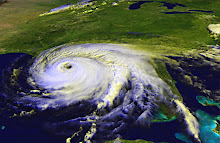The storms don't know that, though, and we've had named storms as early as April (Ana, 2003). Starting in May, I monitor the National Hurricane Center and as soon as they announce an invest, which is an area that could develop into a named storm, I start tracking it.
You can find the computer models, the forecast tools that the NHC folks use to come up with the official track, at Skeetobite and Weather Underground.
Another tool I use, when a storm is approaching my community, is the National Weather Service. Click on "National Maps" and you can see how the high and low fronts are forecast to move over the U.S. for up to six days. A high sitting right over your town could help steer the storm away from you. There are many other factors, such as wind shear, troughs, and ridges, and I am not a meteorologist and haven't figured out how to watch those areas, myself.
That's where the NHC's Discussions come in handy. When you are looking at the official track of a storm on the NHC site, right above the tracking chart are a series of links. Look for the one called "Discussion" and click on it. These discussions explain why the forecaster chose the track that has become the official outlook for the storm.
The important thing is to be aware of what's out there that could potentially impact your life. When a storm comes your way, you'll hear people complaining about how expensive it is to prepare but you don't have to wait until the last minute. Start making your emergency list now. Spread out your costs by buying a few items each week, before a hurricane starts churning its way towards your home.

No comments:
Post a Comment